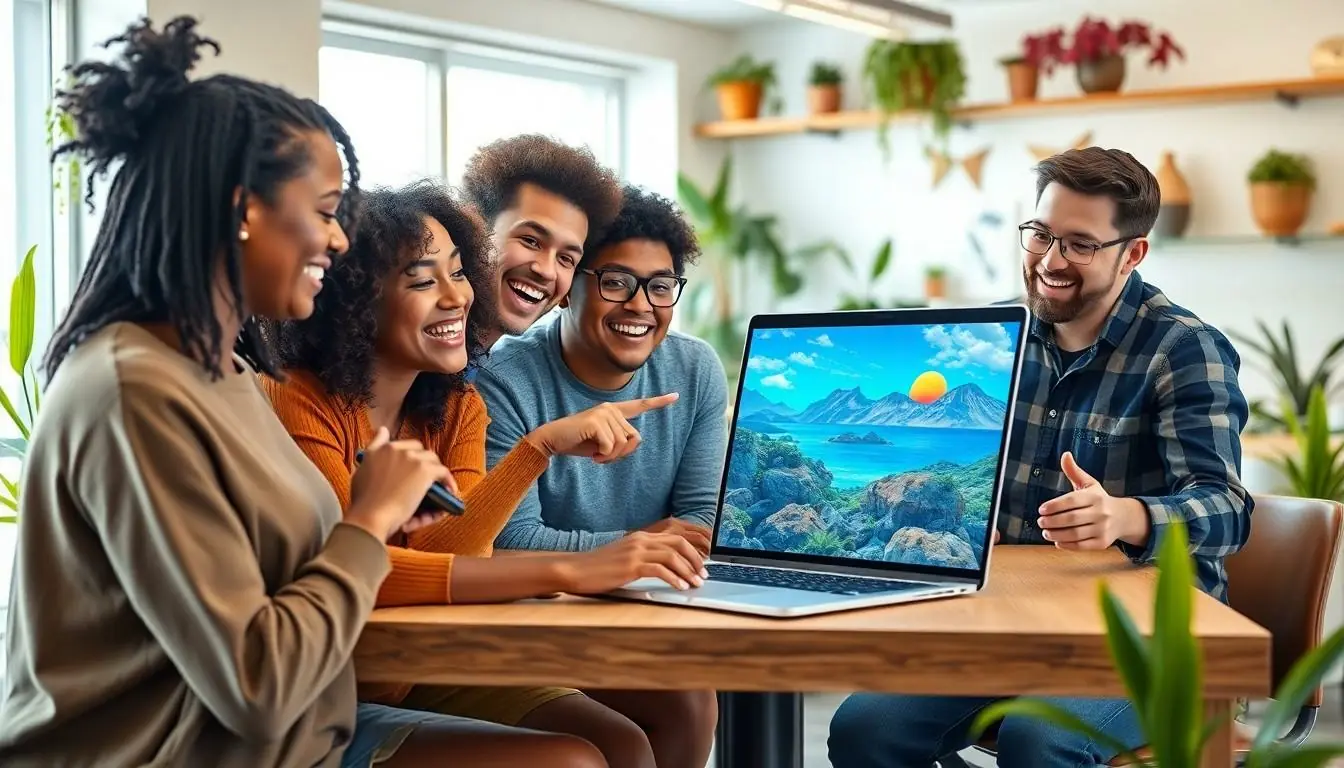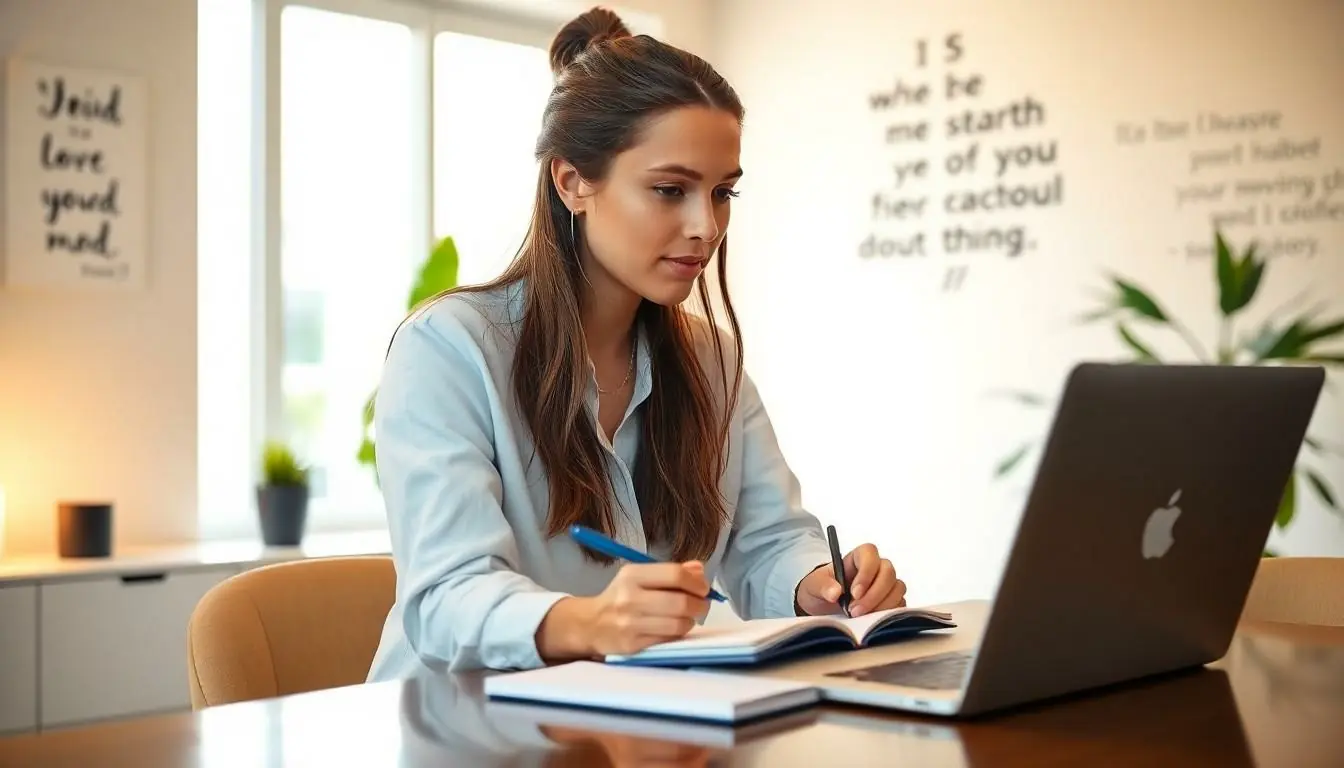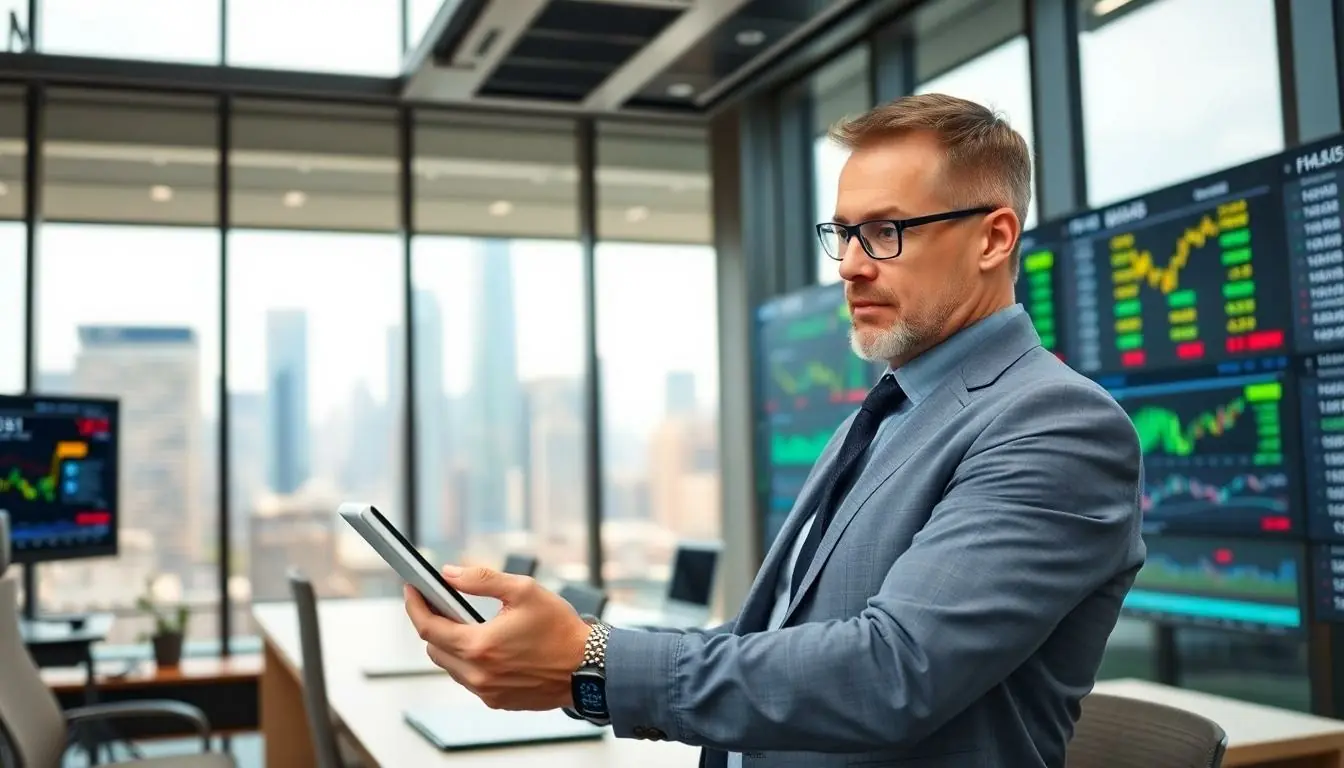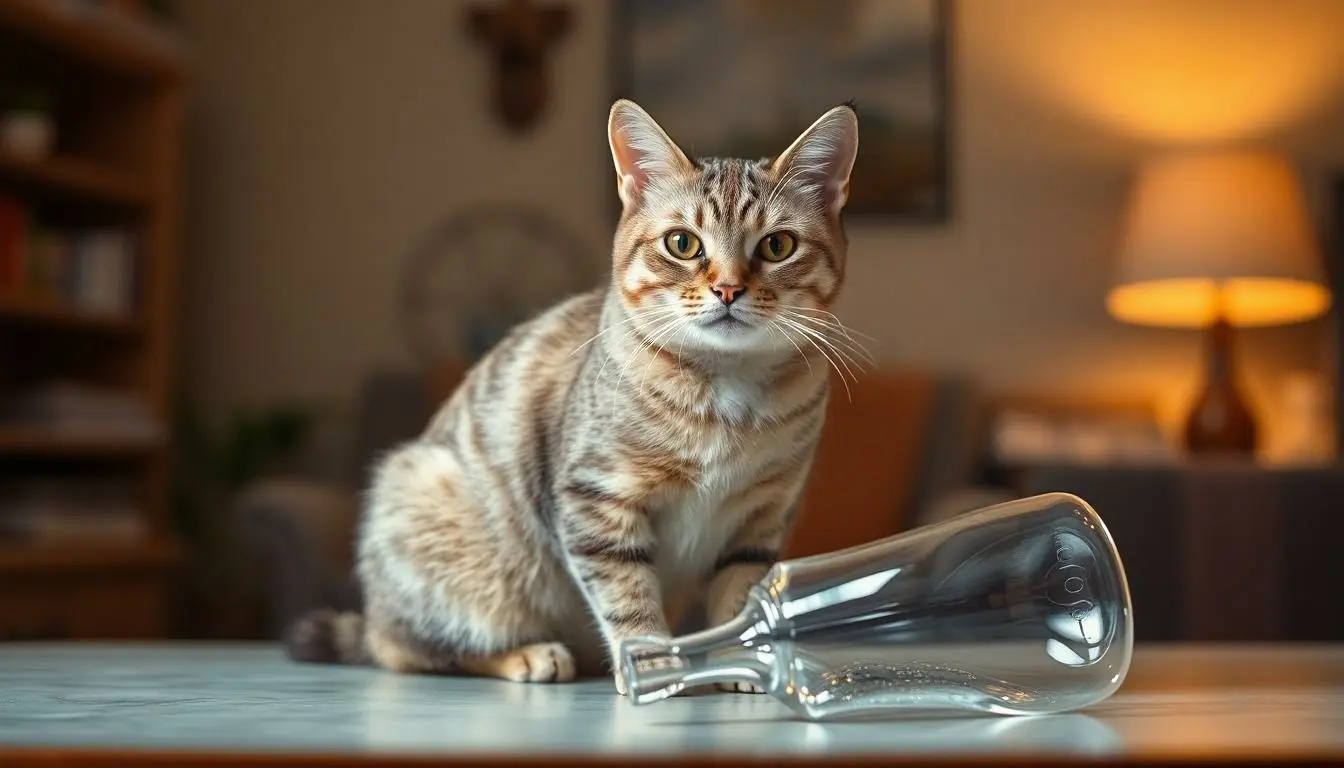In a world where creativity knows no bounds, generating stunning AI images has never been easier—or more fun. Imagine chatting with a smart assistant that can whip up eye-catching visuals just by understanding your words. That’s right! With ChatGPT, you can turn your wildest ideas into vibrant images without breaking a sweat.
Table of Contents
ToggleUnderstanding AI Image Generation
AI image generation involves creating visuals using sophisticated algorithms. These algorithms analyze various data inputs to produce unique images based on user prompts. Through ChatGPT, users can describe their ideas, and the AI translates them into images, bringing creative visions to life.
Deep learning techniques underpin this technology. Models are trained on extensive datasets that provide them a wide range of visual styles and content types. As a result, they can generate original images that mimic different artistic styles, from realism to abstraction.
Users can prompt the AI with specific details to tailor the generated images. Descriptive phrases about colors, compositions, and subjects yield more accurate results. For example, stating “a sunset over mountains” can lead to a stunning depiction, created with careful consideration of the specified elements.
Interactivity enhances the experience. Users might adjust their requests based on initial outputs, guiding the AI to refine the visuals further. This iterative process allows for a collaborative approach, where artist-like results emerge through conversation and feedback.
The advent of AI image generation democratizes creativity. Individuals without artistic training can produce compelling visuals, breaking traditional barriers in art creation. Whether for personal projects or professional presentations, this technology serves a diverse audience.
AI image generation through ChatGPT fosters both creativity and accessibility. As technology evolves, the quality and sophistication of generated images continue to improve, making this tool increasingly invaluable for various applications.
How ChatGPT Supports Image Generation
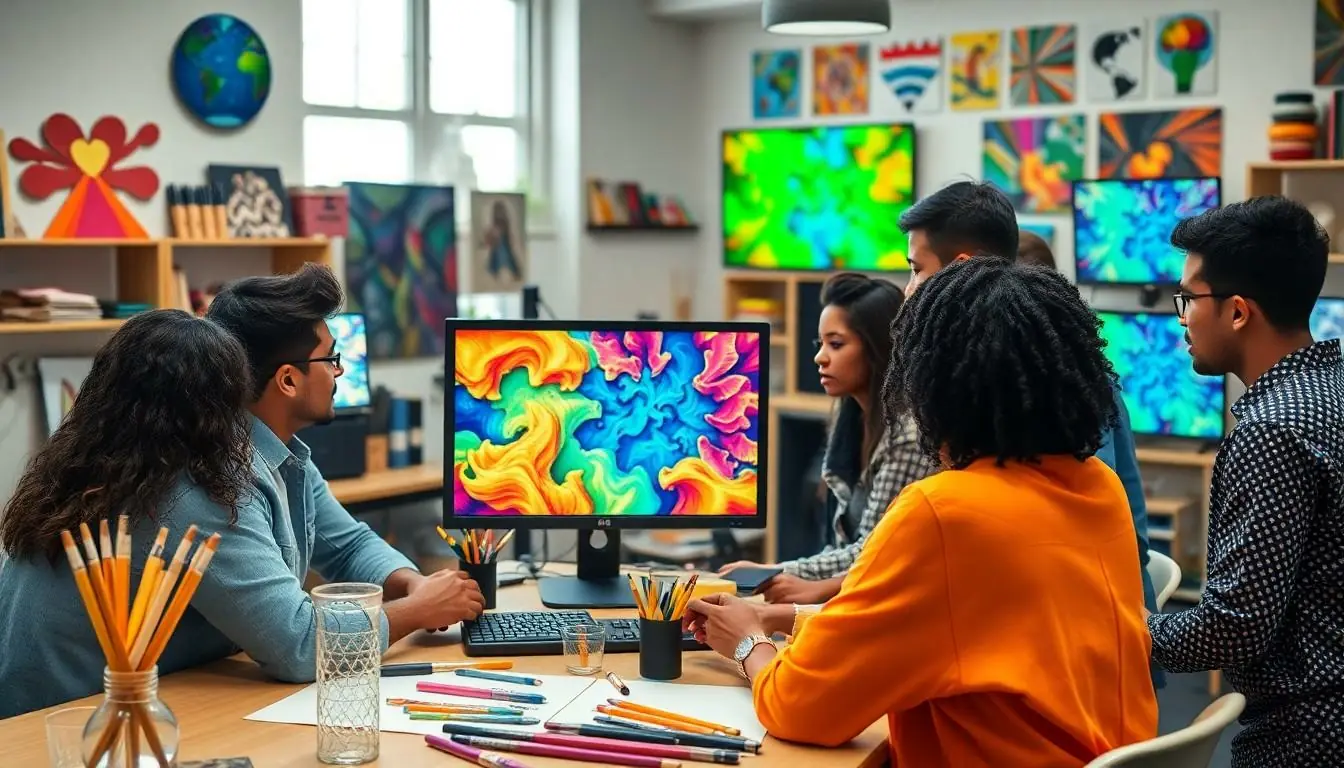
ChatGPT provides a powerful platform for generating AI images from user prompts. Users interact with the model, which transforms ideas into vibrant visuals.
Features of ChatGPT for Image Tasks
ChatGPT engages users with a variety of features tailored for image tasks. It supports prompt refinement, allowing individuals to adjust descriptions for improved results. Detailed input often leads to more specific outputs, enhancing the creative process. Users can explore different styles and themes, giving them control over artistic expression. Collaboration with the AI fosters a unique experience, as instant feedback encourages iterative development. Accessibility remains a core strength, making image generation approachable for everyone.
Limitations to Consider
Despite its capabilities, ChatGPT presents some limitations for image generation. The model lacks direct image creation functionality, relying on external tools to generate actual visuals. Complexity in prompts may lead to unexpected interpretations, affecting the accuracy of results. Variability in artistic style preference means users must be explicit in their requests. Additionally, reliance on text inputs might restrict creative possibilities for certain projects. Understanding these constraints enables users to set realistic expectations while interacting with AI.
Step-by-Step Guide on Generating AI Images
Generating AI images on ChatGPT involves a straightforward process. Users can harness the platform’s capabilities to create captivating visuals from their ideas.
Using Text Prompts Effectively
Crafting precise text prompts maximizes the AI’s output quality. Specificity in language results in more tailored images. For instance, including details such as colors, styles, or moods leads to better alignment with user expectations. Users can also experiment with adjectives and scene descriptions, allowing the AI to interpret their creative vision accurately. Experimentation promotes a dynamic interaction with the model, enhancing the overall experience of image generation.
Adjusting Parameters for Better Results
Adjusting parameters contributes significantly to image optimization. Users can modify settings such as style, resolution, and scale, affecting the final output. Trying various styles encourages exploration of distinct artistic approaches, allowing for unique visual representations. Additionally, experimenting with resolution settings produces clearer, sharper images. Focusing on these adjustments enables users to refine their requests, ultimately leading to satisfying results tailored to their needs.
Applications of AI-Generated Images
AI-generated images serve various practical and creative applications across multiple fields. In marketing, these images enhance promotional materials, capturing attention with visually striking content. Businesses often utilize AI-generated visuals for advertisements, social media posts, and website designs to engage customers effectively.
Education also benefits from this technology. Teachers can create customized visuals for presentations, making complex topics easier for students to understand. Educational institutions leverage AI-generated images to develop diverse and inclusive learning materials.
Entertainment industries find immense value in AI-generated imagery. Film studios may use these visuals for conceptual artwork, developing characters and settings before production. Game developers rely on AI images to design immersive environments and engaging characters, improving gameplay experiences.
Healthcare applications utilize AI images for medical illustrations and training materials. By generating precise visuals, healthcare professionals can communicate complex information effectively, aiding in patient education and professional training.
Moreover, the art world embraces this technology. Artists explore AI-generated images as new forms of expression, merging technology with creativity. Collaborative art projects gain traction as artists work alongside AI to produce unique pieces that challenge traditional practices.
Improving accessibility to design is another key benefit. Individuals without artistic skills can produce high-quality visuals for personal or professional projects, democratizing creativity. This shift allows more people to express ideas visually, expanding opportunities for innovation.
Finally, research and development fields apply AI-generated images to visualize concepts and findings. Scientists can represent data through visual means, making research more comprehensible and compelling. Each application demonstrates the potential of AI-generated images, showcasing their versatility and relevance across various industries.
Generating AI images through ChatGPT opens up a world of creative possibilities. Users can effortlessly translate their ideas into stunning visuals that cater to various needs. This innovative approach not only enhances personal projects but also serves professional applications across multiple industries.
As the technology continues to evolve, the quality of generated images will only improve. Embracing this tool encourages experimentation and collaboration, allowing users to refine their prompts for optimal results. With AI image generation, creativity is no longer confined to those with artistic backgrounds, making it accessible for everyone. The future of visual storytelling is bright, and ChatGPT is at the forefront of this transformative journey.

